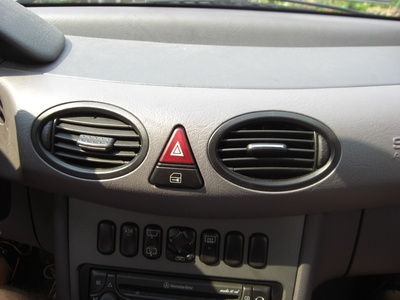
Driving a car, during the hot summer months, without a working air conditioner can be an unpleasant experience, to say the least. Warm air blowing through the air conditioner is commonly caused by a refrigerant leak, some kind of system blockage, dirt or moisture buildup. An auto mechanic can easily fix the broken air conditioner. However, for those people adventurous enough to fix it themselves, there are several steps to properly diagnose the problem.
Start the car and turn the air conditioner on. Open the hood and locate the compressor, which looks like a pump with valve stems and two large hoses coming of it.
Verify that the center of the compressor turns. If it is not turning, jump the compressor by hooking a jumper wire directly to the battery. Locate the wire leading to the electric clutch. Unplug the connector in the middle of the wire. Hook the jumper wire to the compressor wire and the positive terminal of the car battery.
Replace the compressor clutch relay if the air conditioner begins to blow cold air. If the car begins to squeal, the entire compressor may need to be replaced. If the air conditioner blows warm air after jumping the compressor, the refrigerant may need to be charged.
Locate a hose marked as the "high pressure line" on the compressor. Attach an air conditioner pressure gauge to the high-pressure line. Ensure there no gaps by visually inspecting the line and gauge.
Read the gauge after one minute. If the gauge shows green, the refrigerant is normal. If the gauge shows red, the coolant level is low. If the gauge reads high, contact a mechanic immediately to assess the problem. Remove the gauge from the line.
Refill the refrigerant, if necessary, with two cans of refrigerant. Attach one can to the high-pressure line by fitting the hose from the can around the high-pressure line from the compressor. Follow the product-specific instructions printed on the can to complete the connection process.
Turn the air conditioner to "High" or "Max." Release the refrigerant into the high-pressure line by unscrewing the connected valve on the refrigerant can. Turn the can upside down. When ice begins to form, this indicates that the refrigerant is almost completely transferred. Shake the can and feel if there is any more refrigerant remaining. When the can is empty, disconnect the hose on the can and discard both.